The best opportunities for wildlife remain in the north of the Congo. With a decent highway now connecting Brazzaville to Cameroon, as well as numerous internal flights, it's not too difficult to reach the jungle in this region. For the more intrepid, the northeast offers a unique opportunity to experience wetlands along the western bank of the Congo River in the region of Impfondo. Rumours persist of Mokele-Mbembe, the Congo dinosaur, inhabiting this vast swampy region and several expeditions over the years have aimed to seek it out (no luck to date).
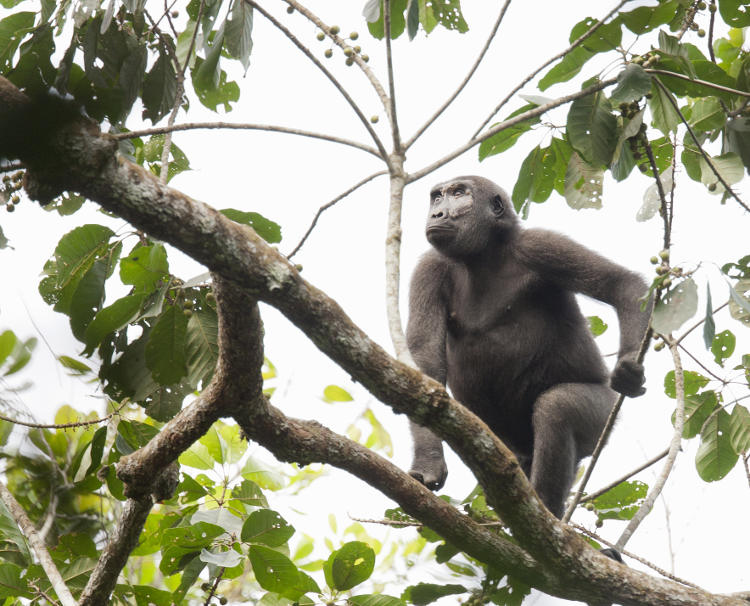
Certainly the most popular species to check out is the western lowland gorilla, a smaller version of the eastern lowland subspecies. Besides the size difference, the individuals can be differentiated from eastern lowland gorillas due to their long fur and and more prominent facial features. These gorillas tend to be plentiful in the north of the Congo and travel in groups of up to a few dozen, with one dominant male leading the pack, often an older male with greying fur or 'silverback'.
Western lowland gorillas are best viewed in Parc National D'Odzala, which sits on the border with Gabon. There are large numbers of the species in the park, and efforts in recent years to improve the facilities have provided several viewing platforms and some rustic accommodation. Wilderness Safaris have also recently opened two upmarket safari lodges in the park. The great apes are also available for viewing in a more controlled environment in the Lefini Reserve on the shores of Lac Bleu, a few hours north of Brazzaville. Many of the gorillas in this reserve were rescued from bush meat markets, so they may not exhibit natural behaviours of those you would encounter in the wild.
Some 10,000 chimpanzees live in the Congo, and you may encounter them anywhere in the wild. Numbers are highest in the west, and extremely large groups can exceed 100 individuals. They are usually found up in deep foliage, often building nests high in trees, though they can occasionally be spotted on open savannahs as well. Their diet consists of fruits, plants and anything else they deem edible. To see them in the wild in Congo it's best to visit Parc National Conkouati-Douli a few hours north of Pointe-Noire. For a more controlled environment, the Jane Goodall Chimpanzee Sanctuary (50km north of Pointe-Noire) has a large area of open savannah as well as tree cover where chimps roam freely. Some of the chimpanzees are kept in a controlled area for research.
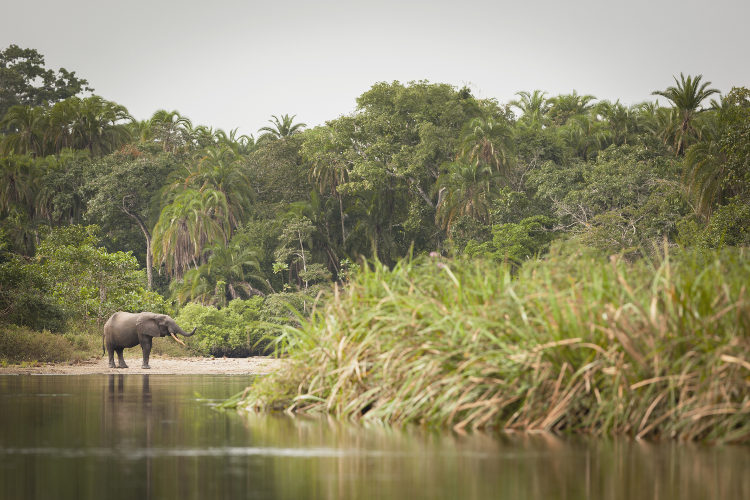
The forest elephant is a distinctly different species than the slightly larger (and more well known) bush elephant of southern and East Africa. The tusks of this species also tend to point groundward rather than curve upwards like those of bush elephants. Although some can stand over 2.5m tall and weigh several tonnes, forest elephants can often be hard to detect in deep jungle. Endemic to central Africa, it is a social animal that feeds on a variety of vegetation. Forest elephants are best viewed in the north of Congo in Parc National D'Odzala, Parc National Nouabalé-Ndoki and around the Lac Tele Reserve. It will likely require a jungle hike to see them and don't be surprised if you encounter one standing right next to you.
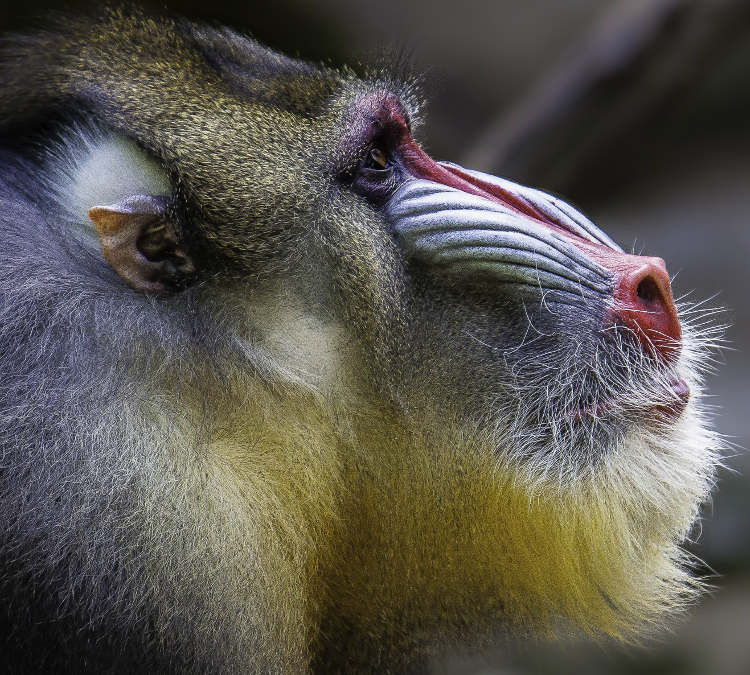
The mandrill is a primate with distinctive body features, with a long face and brilliant colours (it's the world's most colourful primate). It's also omnivorous and highly intelligent. Like chimpanzees it prefers high foliage and gathering in large groups, though it is significantly larger in body size. Groups are found in Parc National Conkouati-Douli in the west of Congo.
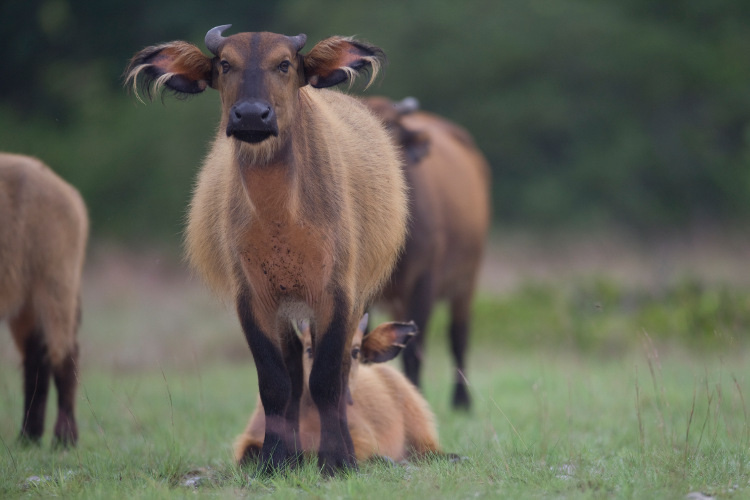
Forest buffalo are a common sight across central Africa, and prefer a mixed range of jungle and savannah. Between March and August they spend the majority of their time in the forest, while the rest of the year they reside in savannahs and marshes. It will normally be seen in groups, and these can be seen in open spaces around various parks such as Lefini Reserve, and Conkouati-Douli and Odzala parks. The smallest subspecies of the African buffalo, it weighs up to 320kg (Cape buffalo can top 800kg) and has a more reddish tone to its hide.
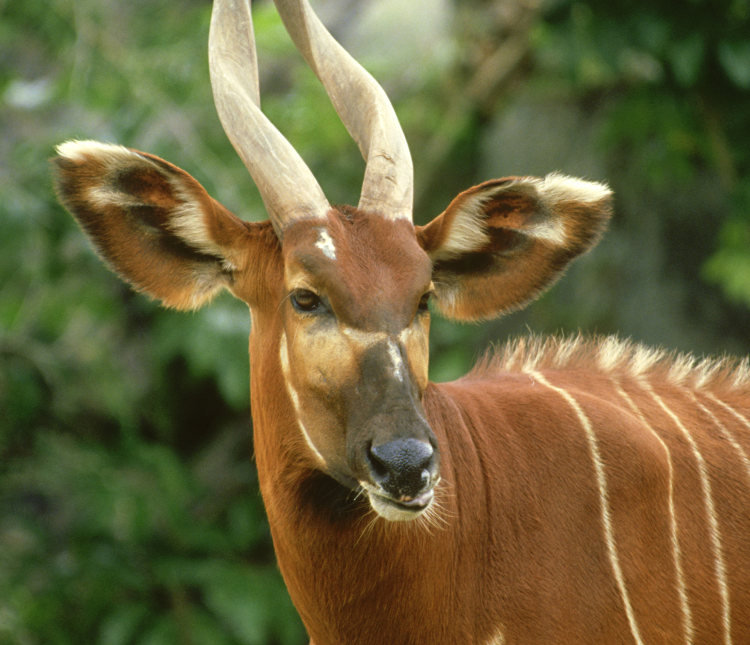
The bongo is one of the largest species of forest antelope and is recognised by its striped body, long horns and wide torso. Unlike some other antelope species, it prefers jungle over savannah. In the Congo it is usually found in the environs of Parc National D'Odzala in the north.
Sitatunga is another forest antelope, which has long hair and no stripes, and only males sport horns. Quite similar to the bongo, it prefers jungles and swamplands, so visitors hoping to see this species in Congo should again go to Odzala or the northeast around Lac Telé Reserve.
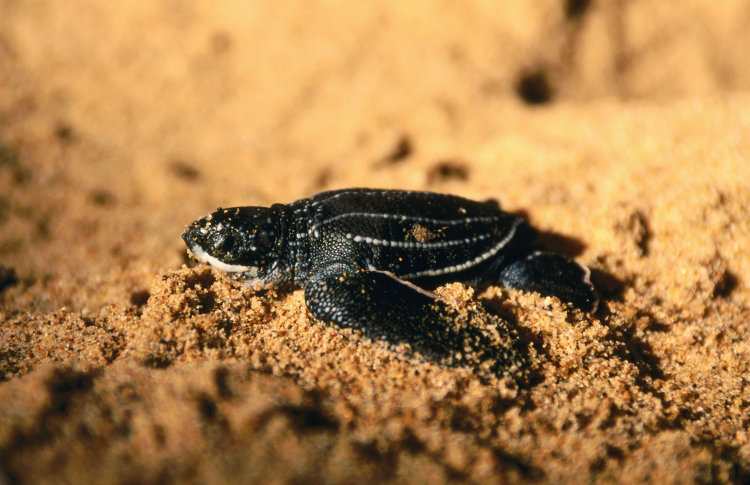 A leatherback sea turtle hatchling heading to sea. Image by Dave Hamman / Getty Images
A leatherback sea turtle hatchling heading to sea. Image by Dave Hamman / Getty Images
The leatherback is one of the largest sea turtle species and inhabits the waters off the Congo's west coast. It is rarely seen out of the Atlantic's swell, though large numbers do make landfall on the shores of Parc National Conkouati-Douli to find safe spots to lay their eggs (this happens only under the cover of night).
Much of the birdlife in Congo is not endemic specifically to the country but to central Africa in general. That said, research has yet to be done to identify endemic species in Congo. Hartlaub's duck is the only forest-dwelling duck known and thrives in Congo's deep jungles and wetlands. It has a brown body and greyish wings. The largest hawk species in Africa, the long-tailed hawk, makes its home in the jungle areas of Congo. Birdwatching can be productive in any of the Congo parks, though the north and northeast, in the region of Odzala and Ndoki-Nouabelé parks, have had a larger variety of recorded sightings than the west.
The Republic of Congo's main international airports – Brazzaville and Pointe-Noire – have good air connections to Europe through African hubs such as Johannesburg and Addis Ababa. Air France is the only current European carrier offering flights to both Brazzaville and Pointe-Noire. Keep in mind that most nationalities will require a visa prior to arrival, usually issued without too much trouble if you can show a hotel reservation. As well, knowing even a modest amount of French will go a long way in the Republic of Congo as English-speaking assistance can be scarce.